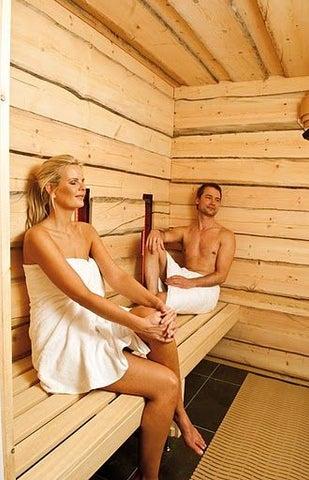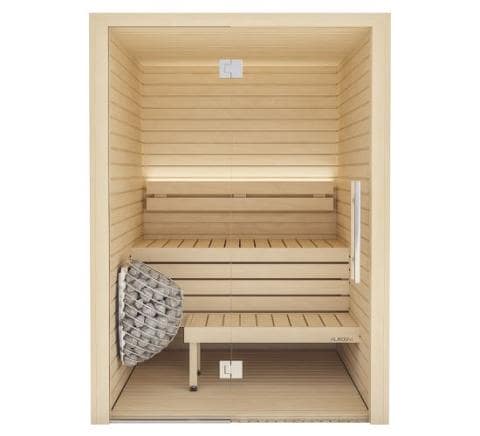5 Simple Techniques For Traditional Sauna
5 Simple Techniques For Traditional Sauna
Blog Article
The 30-Second Trick For Traditional Sauna
Table of ContentsAbout Traditional SaunaNot known Facts About Traditional SaunaRumored Buzz on Traditional SaunaTraditional Sauna Can Be Fun For EveryoneThe Basic Principles Of Traditional Sauna
Most of the weight lost in a sauna is water loss and is re-gained upon rehydrating. Nevertheless, undoubtedly sauna can be an essential component of a healthy and balanced weight-loss program. To consider the differences between typical and IR saunas, I will divide these right into verifiable, academic, and fabricated differences.Thus, the most popular point in the saunawhich is at the ceiling straight over the sauna heateris commonly in between 185 and 190 F. Claims that a traditional sauna exceeds 200 F is merely not true and not appropriate for electric saunas sold in the US. The temperature level for a far-infrared sauna is generally established in between 120 and 140 F; however, unlike the typical sauna, the goal in and IR space is not to attain a high temperature level.

When a conventional sauna has been properly heated up, the sauna walls are warm, the air temperature level has achieved set temperature and the rocks are very warmed. As an intriguing side note, the warmed wall surfaces and the rocks are producing far-infrared heat, combined with the warmed air, to produce an "covering heat".
A Biased View of Traditional Sauna
When the heat is attained, the elements cycle on and off to preserve the heat. The majority of traditional sauna customers delight in putting water over the rocks to produce heavy steam to elevate sauna moisture levels. The advantages of pouring water over the rocks include: making the space extra comfy, dampening the nasal flows, and permitting the use of aromatherapy by mixing crucial oils with the water.

When the power goes into the body, it triggers the body temperature level to increase and inevitably causes sweat. In an infrared sauna it is essential for the emitters/heaters to stay on nearly regularly. Given that there is no mass of rocks to maintain heat, the sauna will cool down if the emitters turned off.
All About Traditional Sauna
As stated above, the sauna bather anchor in an infrared room intends to position himself before running emitters to obtain optimal gain from the heat. The home heating time for the two spaces can be extremely various, depending upon just how the rooms are used. For a traditional sauna, a bather needs to allow 30-40 mins for the space to attain a preferred temperature and to appropriately pre-heat the rocks.

A well built sauna will typically accomplish a temperature of 150-160 F in concerning 30-40 mins. For hotter temperatures, the room might need to warm for a longer duration.
To some, 15 mins was "thrown away" while the infrared energy warmed the timber panels instead of heating a body, while others locate a pre-heated space to be a lot more comfy and see think a raised starting temperature level is essential to start sweating. The size of recommended usage for every room is roughly the very same (10-15 mins per session); nonetheless, because of the reduced air temperature levels and the ability to really feel the results of infrared warm much faster than a typical sauna, it is not unusual for an individual to invest an overall of 20-30 mins in an infrared sauna.
Top Guidelines Of Traditional Sauna

The average expense per kWH of electricity in the U.S. is around $0.11, so a 4.5 kW heating system will certainly cost approximately $.50 to compete one hour, if the heating unit runs continuously for one hour. Usually a sauna heating system will compete 75% of the very first hour and 50% of subsequent hours on considering that the elements cycle once the set temperature level is accomplished.
A 2 person far-infrared room is generally physically smaller than a standard sauna, typically regarding 4' x 4' or smaller sized. The IR heating unit is generally 1.5-1.7 kW making use of a 120 volt 15 amp plug-in solution. Since the area can be used quicker than a sauna area, we will assume the space is made use of for to of an hour including warm up time.
Ultimately, there is a hardly ever gone over distinction in the social experience in between both spaces. While our culture has actually shed a few of the social advantage of the standard sauna experience, it can be really socially gratifying (Traditional Sauna). From family time in the sauna, to heart-felt discussions visit this site with better halves, to sauna partiesthe conventional sauna experience can result in intimate interacting socially
How Traditional Sauna can Save You Time, Stress, and Money.
Most greater end infrared areas consist of colored light treatment, noise systems and full-glass fronts. The size of most spaces permit 2 people to pleasantly utilize the space, while some layouts might permit for a 3rd or fourth person to use the area. Customized infrared areas are additionally readily available, with area dimensions offered as much as 7' x 8' x 7' high.
Report this page